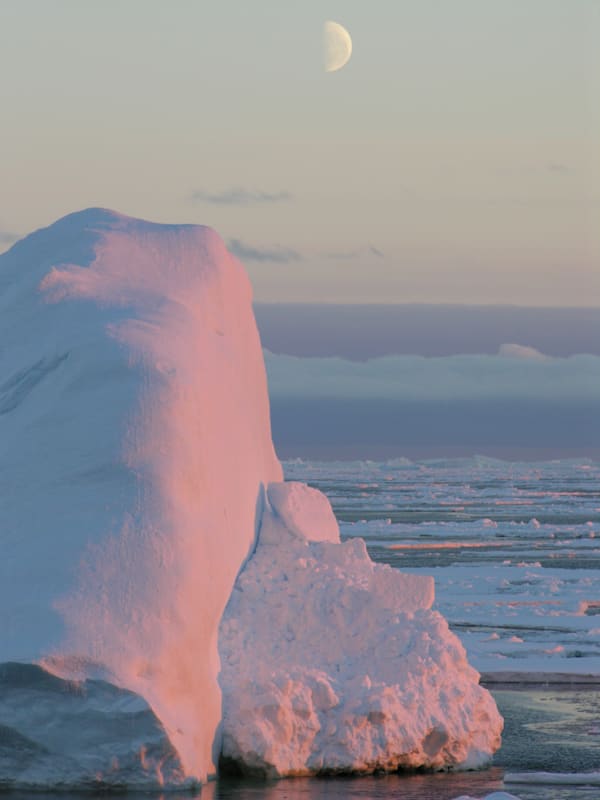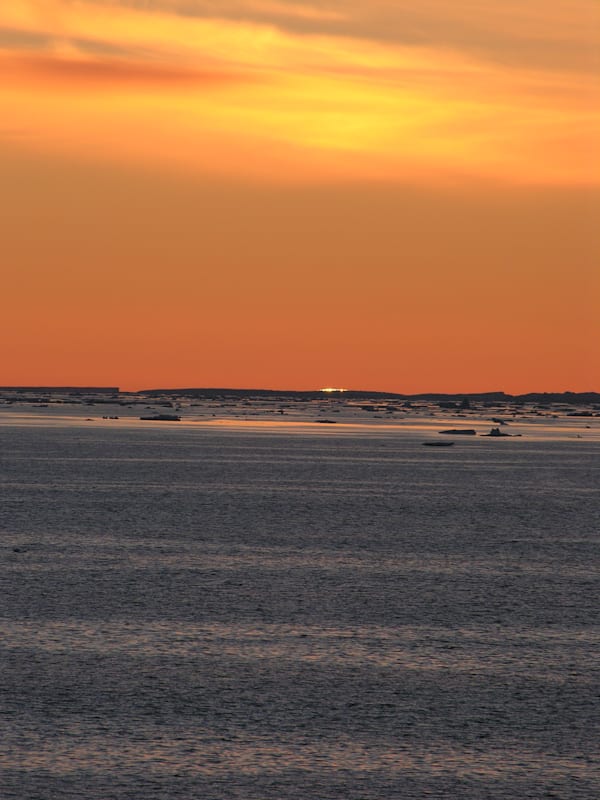“The debate continues between those who have seen and believe and those who consign green flashes to the list of nautical legends along with mermaids, sea serpents and great white whales.”
. . .
The gaudy colours of the drawn-out Antarctic sunset changed slowly from orange to blood red as the sun angled its way towards the iceberg-dotted horizon. Fireworks in my optic nerve reminded me that I had been spending too long on the ship’s bridge staring at one of mother nature’s most spectacular lightshows.
Finally the upper rim of the sun met the edge of the ocean and for a split second the sky was lit by an intense emerald flare. Had I just seen the legendary green flash or was it a product of retinal burn-out?
Very occasionally, just as the sun sets over the ocean, an intense flash of green light can be seen over the spot where the orb of the sun has descended below the horizon. This is the green flash which, in the language of atmospheric physicists, is a “by-product of the large variations in astronomical refraction near the horizon”. Green flashes do not occur with every sunset and it is unclear why some evenings are favoured with these spectacular displays where others are not.
The flashes are enigmatic. They are classified as mirages, yet we are assured that they are real phenomena. There are myths, legends and a fair degree of disbelief amongst seafarers concerning their existence. Some who claim to have observed green flashes wax lyrical while others, who have spent a lifetime at sea without having seen one, remain sceptical.
There is something special about watching a sunset at sea, particularly at high latitudes, and on clear evenings people gravitate to preferred observation posts to view and photograph the spectacle. Because of the curvature of the globe, sunsets in the extreme south can last for hours and sometimes the sun never sets at all. In mid-summer, the sun can angle its way towards the horizon, giving every impression of setting only, to bounce into a premature dawn. Because these sunsets can be such drawn-out processes, it is possible to get distracted whilst watching even such visually spectacular phenomena, and thus you can turn away at the crucial moment when the sun dips below the horizon.
The first time I saw the green flash – and I have seen it at least three times now so I am convinced it exists – was on a ship in Antarctic waters in 1996. We had exited the pack ice and were heading through open water littered with ice floes and small bergs. The bridge was packed with spectators because the evening was fine – clear skies and barely a ripple on the surface of the normally boisterous Southern Ocean.
We were about 60 degrees south and it was mid-February so the sun was actually setting, but doing so in a languorous and seductive fashion. This provided an adequate amount of time for the sunset-watchers to swap nautical tales of phenomena, imagined and otherwise, and to speculate on the reality of the green flash. Some swore that it was merely a nautical fable – they had been to sea for decades and had never seen it. Others coyly suggested that they had seen it but, unfortunately, they had failed to take a photograph so were unable to back up their claim with evidence.
I recall I had actually been looking the other way when the sun finally dropped below the horizon and my camera was not to hand when I turned to see, for an instant, a bright green light flare above the spot where the sun had disappeared. All of those watching, sceptics and believers, gasped as we acknowledged that we had shared a rare and precious experience.
Only one person had had the forethought to use a camera to document this event, and smugly informed his jealous companions that he had finally obtained definitive evidence that the green flash was real. Unfortunately, it only took a short while for him to realise that, in that pre-digital age, he had loaded his camera with black and white film, so merely had evidence of a grey flash.
I have since spent many an hour on the bridge of ships hoping to see, and photograph, this elusive phenomenon. Unfortunately, in this era of digital photography and simplified image manipulation, it is difficult to convince people of the true nature of a photograph so even having documented proof is no longer good enough to convince unbelievers. So the debate continues between those who have seen and believe and those who consign green flashes to the list of nautical legends along with mermaids, sea serpents and great white whales.










